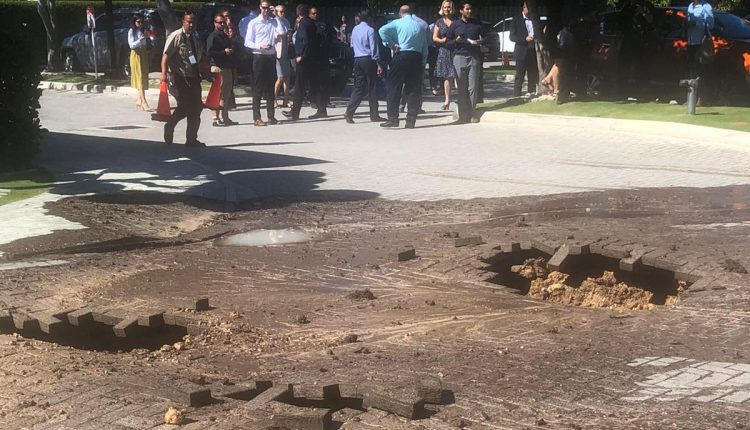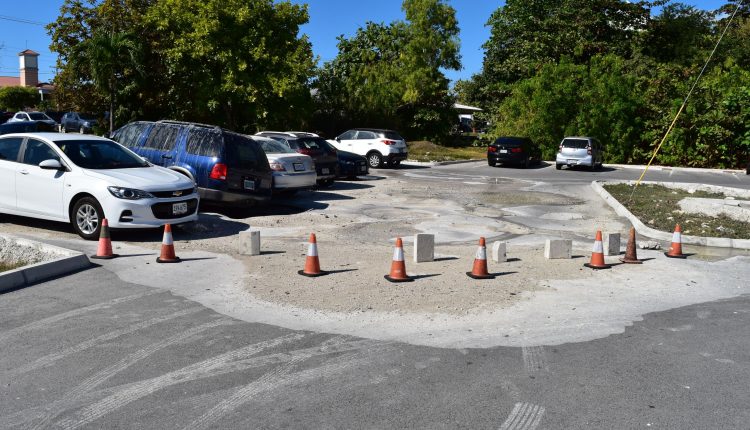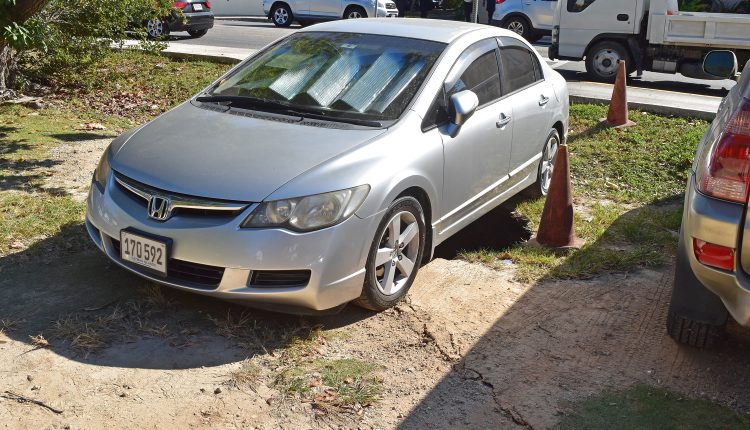The Cayman Islands and the northern Caribbean were struck by a magnitude 7.7 earthquake on Tuesday afternoon.
The quake, which originated at a depth of 10km (6 miles), was felt in Cayman, Jamaica and Cuba, according to the United States Geological Survey.
The tremor, which occurred around 2:10pm and lasted about two minutes, sent office workers scrambling from their buildings into open spaces. Several sinkholes opened up at various points around Grand Cayman, causing damage to vehicles and at least one property.
Several aftershocks occurred in the hours following the initial quake. The first, registering at 4.7 magnitude, was felt just after 4pm and residents were warned to be on alert for further possible impacts. USGS reported that the aftershock occurred 30km (16 miles) southeast of East End. Another was felt just before 5pm, measuring 6.5 magnitude. By 6pm, there had been a total of eight aftershocks, according to USGS, although most were not felt by those in Cayman.
A tsunami threat message was briefly issued through the US National Weather Service, and police and government issued warnings to residents to steer clear of the coast. A ‘small tsunami’ wave measuring 1.5 feet was recorded in the George Town harbour, according to Hazard Management Cayman Islands’ Simon Boxall.
Premier Alden McLaughlin appeared on government television in an emergency broadcast around 4:30pm to confirm that no one had been injured in the incident.
“I know people are very concerned and alarmed and there has been some structural damage, including at my own house,” he said. “It is with a deep sense of gratitude that I say it doesn’t appear as if anyone has been hurt and we have been spared the worst of what could have been a truly devastating ordeal.”
Owen Roberts International Airport was evacuated immediately after the initial quake and patients at the Cayman Islands Hospital were moved to the upper floors amid fears of a tsunami. A statement released by the Cayman Islands Airports Authority at about 6pm confirmed there was no damage to either Owen Roberts or Charles Kirkconnell International Airport.
“Once the earthquake was over, as part of business continuity, all airport facilities were inspected for damage, including the runway, aprons and taxiways,” the CIAA said. “Once it was confirmed that there was no damage to the airport terminal, flight operations continued as normal.”
Governor Martyn Roper, also speaking in a government television broadcast Tuesday afternoon, said, “I know it was a really scary event for all of us on the island. At this stage, there is a low risk of tsunami, but residents are advised to move to the second floor or higher as a precaution.”
An all-clear from the threat of a tsunami was issued in a later broadcast.
The governor indicated there had been some structural damage on both Cayman Brac and Grand Cayman. He said the Cayman Islands Fire Service and Public Works Department were responding to those incidents and the police helicopter was conducting aerial surveys of the island.
He urged residents to keep an eye on the Hazard Management Cayman Islands Facebook page, as well as an ear on Radio Cayman for more updates.
There was no evidence of any injuries or major damage.
“A preliminary damage assessment is now under way and it has been confirmed that several sinkholes have opened up, and at least one property has been structurally damaged, but there have been no confirmed reports of injuries to persons in the Cayman Islands,” Hazard Management said in a statement just after 4pm.
Police reported that sinkholes had opened up in a number of roads throughout Cayman, including several in the Windsor Park area; at Worthing Drive and Powell Smith Road in West Bay; Rum Point Road in North Side; and South Side Road West in Cayman Brac.
At Cricket Square in George Town, a small crater also opened up in the brick paving, and on Seven Mile Beach, several sinkholes of varying sizes appeared in the sand.
Sewer pipes along West Bay Road erupted, sending sewage onto the streets.
At least four cars were affected by sinkholes that appeared in the Cayman Islands Hospital car park on Smith Road. The area was cordoned off by police and security personnel. Two large sinkholes, almost half the size of the vehicles, appeared beneath two cars.
Elsewhere, items were thrown from the shelves of supermarkets and liquor stores, and residents observed wave action in condo swimming pools.
All matters in the courthouse were stopped following the earthquake and jurors were sent home. Judges, attorneys, security staff, reporters and defendants clamoured out of the building as the floor swayed beneath their feet.
Armed police who were at the courthouse on Tuesday, as added security for a home-invasion case, assisted prison officers to load defendants into prison vans and then escorted the fleet out.
Traffic backed up immediately after the earthquake and throughout the afternoon, as people left work early. Several fender benders were reported on Grand Cayman’s gridlocked roads.
Schools throughout Cayman were closed in the immediate aftermath of the quake. According to a Government Information Service press release, all government schools will remain closed on Wednesday while structural assessments of school buildings are carried out.
No flights were affected at local airports, and it was business as usual at the port in George Town where there were no signs of any impact, according to Port Authority Acting Director Joey Woods.
On Cayman Brac, the Aston Rutty Centre, which doubles as a hurricane shelter on the Bluff, opened around 2:30pm in preparation for a possible tsunami, and patients from Faith Hospital, along with 50 members of the public, went to the shelter, according to Lyndon Martin, of the Public Works Department.
Though the threat of a tsunami generated significant anxiety on all three islands, reports from the US National Weather Service suggested that any wave impact would likely have hit within minutes of the initial earthquake.
The bulletin listed the estimated time of arrival for any wave impact as 2:21pm on Cayman Brac and 2:37pm on Grand Cayman.
John Tibbetts, director general of Cayman Islands National Weather Service, said Tuesday afternoon, “Given that those times have passed, and we do not have a report of a significant wave coming on shore, I would think that the tsunami threat from the initial wave has passed.
“However, be reminded, a tsunami is a series of waves and there is also the possibility for further tremors that are likely to occur over the next six, eight, 12 hours.”
Tim Austin, deputy director of the Department of Environment, said the George Town tide-monitoring system, which is part of the Caribbean tsunami warning network, registered some small waves on the recorder at the predicted time.
Hazard Management advised that people check their homes for structural damage or hazards, and added that the Red Cross shelter on Huldah Avenue in George Town would be open throughout Tuesday night for people who needed alternative accommodation overnight. The Aston Rutty Centre also remained open.
Water services were interrupted in parts of Grand Cayman, due to damage to water pipes. Later on Tuesday, the Water Authority shut down its water distribution system to systematically check for leaks, caused by the quake.



